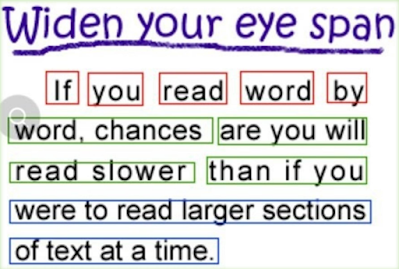Table of Contents
Intensive and Extensive Reading
- Types of Reading
- Material based on these types
- SQ3R method
- Faulty Reading Habits
- How to Improve Reading Skills
What is meant by “extensive” and “intensive”?
Extensive and intensive reading refers to approaches to language learning and teaching. From their names, you can probably deduce that they both celebrate reading as an integral part of language learning.
What is Extensive reading?
Brown (1989) explains that extensive reading is carried out
“to achieve a general understanding of a text.”
“occurring when students read large amounts of high interest material, usually out of class, concentrating on meaning, “reading for gist” and skipping unknown words.”
What is Extensive reading?
- An extensive reading which involves learners reading texts for enjoyment and to develop general reading skills. It refers the reading for joy.
- This approach supporters reading as much material in your target language as humanly possible. This way, its supporters claim, you will be exposed to the widest range of vocabulary and grammatical structures. All of this is supposed to make you a better language learner and help you on the way to fluency (smoothness).
Characteristics of Extensive Reading
Day and Bamford (1980) put forward characteristics identified in successful Extensive Reading Programs. A variety of materials on a range of topics is available.
- Students select what they want to read .
- The purposes of reading are usually related to pleasure, information and general understanding.
- Reading is its own reward.
- Reading materials are well within the linguistic competence of the students in terms of vocabulary and grammar.
- Reading is individual and silent.
Important aspects of extensive reading:
- Texts must be interesting. Since extensive reading is done for longer periods of time, you must take care to select texts that hold your attention, and keep you coming back for more, hour after hour.
- Texts must be level-appropriate because you must be able to understand a high-percentage of a text before you even begin.
- The goal is to absorb unknown words through context therefore, if you don’t understand the bulk of the context, the text is not yet appropriate for you to read extensively.
- Texts must be of moderate length. Specifically, a text should be on average at least 15-30 pages long. Texts of this length are long enough to fully develop an idea or narrative, and require you to keep mental “track” of ideas, concepts or characters as they develop over time.
Ideal learning materials for extensive reading:
Bilingual Books Monolingual (Native) Books Magazines Comic Books Stories Novels/Digests Newspaper
What is Intensive reading ?
Intensive Reading, sometimes called “Narrow Reading”, may involve students reading selections by the same author or several texts about the same topic. When this occurs, content and grammatical structures repeat themselves and students get many opportunities to understand the meanings of the text.
What is Intensive reading?
- Intensive reading involves learners reading in detail with specific learning aims and tasks. It refers to reading carefully for an exact understanding of the text. Necessary for contracts, legal documentation, application forms, etc.
- This approach helps language learners really understand the language’s grammar and syntax.
- The proponents of this method use a range of exercises to complement the reading itself.
Characteristics of Intensive Reading
- Usually classroom-based
- The reader is intensely involved in looking inside the text
- Students focus on linguistic or semantic details of a reading
- Students focus on surface structure details such as grammar and discourse markers Students identify key vocabulary
- Students may draw pictures to aid them (such as in problem-solving)
- Texts are read carefully and thoroughly, again and again
- The aim is to build more language knowledge rather than simply practice the skill of reading
- Seen more commonly than extensive reading in classrooms
Ideal learning materials for intensive reading:
- News articles
- Research Articles
- Syllabus
- Official letters
SQ3R Method for Reading
SQRRR or SQ3R is a reading comprehension method named for its five steps: survey, question, read, recite, and review. The method was introduced by Francis P . Robinson, an American education philosopher in his 1946 book Effective Study.
SQ3R
- Survey
- Question
- Read
- Recite/Recall
- Review
Faulty Reading Habits
- Finger Movement
- Head Movement
- Distractors
- Noisy Environment
- Sub-Vocalization
- Vocalization
- Reading each word
- Regression
- Reading in Bad Light
Finger Movement
Head Movement
Distractor
Noisy Environment
Reading each word
Regression
Reading in Bad Light
How to Improve Reading Skills?
- Reading in Chunks
- Contextual Reading
- Dedicated Reading
- Meditating
- Highlighting the Important Stuff



















